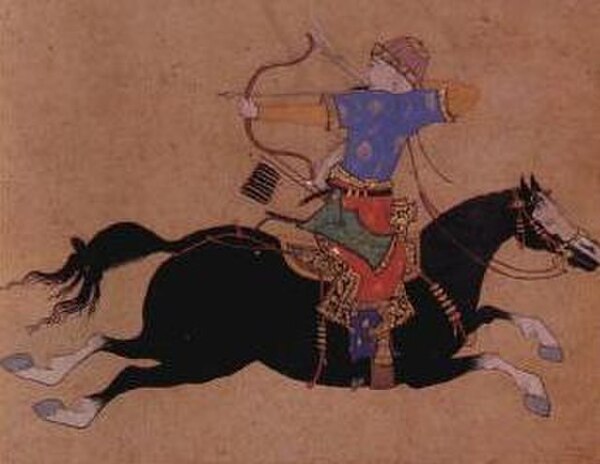
Since the emergence of the nation-state and national armies in the 18th and 19th centuries, the role of mercenaries in state armies has steadily become obsolete. The very phrase denotes a certain antiquated and bygone era. But in recent years, nation-states have increasingly employed mercenary groups around the globe. “PMCs” (private military companies) like Russian oligarch Yevgeny Prigozhin’s Wagner Group have been deployed in Syria, Libya, Mali, the Central African Republic, and now in Ukraine, where they are engaged against UKR forces in the eastern province of Donetsk. Before the “special operation” in Ukraine, Wagner mercenaries were highly valued by Syrian dictator Bashar al-Assad as superior in combat to the Syrian army.
Younger readers might remember that PMCs are the villains in the critically acclaimed 2008 video game Metal Gear Solid 4: Guns of the Patriots, set in a dystopian 21st century in which the United States and other great powers wage proxy wars against each other in the Middle-East, Latin America, Eastern Europe, and Africa through the employment of these private armies. The main character, the grizzled veteran, codenamed “Old Snake” laments: “War has changed. It is no longer about nations, ideologies, or ethnicity. It is an endless series of proxy battles, fought by mercenaries and machines.” The player is left valorizing the role of national armies, who fight on behalf of their country or for ideology as the lesser evil to that of private armies engaging in a bloody and never-ending cycle of war profiteering.
The history of the Medieval Mediterranean beckons us to draw comparisons between the past with our present moment. While Wagner mercenaries act as capable special forces and intelligence liaisons for Vladimir Putin’s military ambitions, they are now, for the most part, an extension of the Russian armed forces. As the war in Ukraine has dragged on, they have largely been integrated into the Russian army. On the other hand, Medieval mercenaries could be more than just extensions of state and royal actors. They could be political agents in their own right.
From the 11th to the 14th centuries, the Mediterranean was congested with mercenary groups like Normans, Seljuk Turks, Rus, Pechenegs, Cumans, Catalans, and dispossessed Latin/Italian knights who traversed the Mediterranean searching for the highest bidder. In many cases, mercenaries sought money and court titles above opportunities to provide lords with loyal service. In almost every case, foreign mercenaries gave the lords and princes who employed them a much-needed “tactical difference” against an opponent on the battlefield. However, the Byzantine emperors of the late 11th century often had trouble reigning in the ambitions of Norman mercenary commanders. These commanders’ service was highly valued due to their role as shock cavalry, but, as Eleni Tounta’s research shows, they were also known to be prone to insubordination. The same issue plagued Byzantium in the early 14th century when the famed Catalan Company turned against the emperor, raiding the environs of Constantinople and eventually establishing their own independent principality in Athens. Such acts of insubordination would nearly bring the empire to its knees during times of crisis.

During the 13th century, Byzantine emperors recognized the value of weaponizing Christian westerners against their Islamic opponents in the east and vice versa. At the Battle of Antioch in 1211, the emperor Theodore Laskaris led an army of 2,000 men, including 800 Latin knights. The battle took place in a narrow valley against an imposing Seljuk-Turk army. The heavily armored Latin knights, wearing the sign of the cross, impetuously charged against the lighter Seljuk army, with screams of “Deus vult!” (God wills it). The Byzantines admired how Latins could transform in the midst of battle into raging, manic warriors on behalf of their faith. Despite the Latins’ apparent advantages, the ensuing battle saw significant casualties on both sides and the knights were cut down to a man by the Seljuk army. Although the Latin contingent was annihilated, Byzantine eyewitnesses regarded their sacrifice and bravery as the key to winning the battle. In this case, the Latins prioritized their fanatical devotion to Christ over the promise of monetary rewards at the risk of their own lives. But for the Byzantines, who rarely resorted to religious fanaticism as a military ideology, the use of Latins on the battlefield against the soldiers of Islam was a calculated move to augment imperial power on the chessboard of the eastern Mediterranean.
In other cases, however, foreign mercenaries could leverage their tactical value in order to gain a more lucrative contract with their employer. According to Greek and Latin accounts, in 1263-1264, the Byzantine Emperor Michael VIII Palaiologos (r. 1259-1282) assembled an army composed of both local Greek troops from Anatolia and Turkic mercenaries in a campaign to recover southern Greece from French crusaders who had colonized the Aegean after the sack of the imperial capital, Constantinople in 1204. In multiple engagements, the western knights had bested the Greek forces in “lance to lance” combat. The Turks, who fought as light cavalry with bow and arrow, complained to the Byzantine general, Constantine Palaiologos. According to them, Constantine had not utilized them properly — or at all — against the Latins, whose horses they could shoot at from a distance. Knowing their own value, the Turks reportedly demanded six months' pay in advance on the eve of battle. In response, Constantine unintentionally doomed his army by publicly berating the Turkish commander, provoking the Turks’ defection to the side of the western-European crusaders. The crusaders snatched a crucial military edge from Constantine by deploying his own Turks against him. This defeat was so catastrophic that it delayed the Byzantine restoration of southern Greece by almost two centuries. The example underscores that it was always incumbent upon the employer to ensure — by way of enticement — his mercenaries’ loyalty.

Alongside the tactical edge that foreign mercenaries provided, there were also ideological reasons for ambitious Mediterranean kings to employ foreigners in their armies. According to scholar Hussein Fancy, the Christian kings of Catalonia-Aragon projected royal power by employing lightly armed Muslim jenets in imitation of the mighty Holy Roman emperor, Frederick II Hohenstaufen. Frederick appealed to Roman law as a means to justify the employment of Saracen archers against Christian opponents. Despite being a Christian leader himself, Roman law enabled him to dominate non-Christian minorities and utilize them against fellow Christians, a risky move that sparked the ire of the popes of Rome. Claiming this imperial legacy, the weaker but equally ambitious kings of Aragon underscored their imperial inheritance by weaponizing the jenets against their own Christian rivals.
Did the Byzantines employ similar ideologies when using foreign mercenaries? The aforementioned Byzantine emperor Michael VIII Palaiologos agreed to unite the Greek Orthodox and Roman Catholic Churches at the Second Council of Lyons in 1274. The union would have enabled the emperor to transcend into the role of “catholicus rex” (catholic king) partially in order to validate his policy of hiring western soldiers into his military to fight against crusader and Italian opponents. The promise of union meant that the papacy could no longer prohibit Catholic soldiers from serving in the emperor’s army. Throughout the 1270s, Michael VIII sponsored western corsairs to instigate reprisals against Italian merchant ships and enrolled the dispossessed Italian lord, Licario, into his navy. Licario eventually climbed to the prestigious rank of megas doux (grand duke) and became the emperor’s trusted confidant. As a Byzantine admiral, he conquered a number of Aegean Islands from the possession of his Italian brethren using a ragtag force of Catalan mercenaries seeking fame and fortune in the Byzantine Empire, more than a thousand miles away from their distant homeland in Spain.
While war may have changed for our old, cold warrior protagonist in Metal Gear Solid 4, modern mercenary groups seeking gainful employment from state actors is perhaps a return to form from the High to Late Middle Ages. The Wagner group might be the beginning of a much larger trend, in which state governments concede traditional national armies in favor of private ones backed by shadowy financiers. For now, however, the Wagner company is largely indistinguishable from other Russian battle tactical groups (BTGs) in Ukraine. In any case, the organization provides its employees with higher pay than the standard Russian soldier. In the Central African Republic, the government reportedly gave a Wagner-linked company access to gold and diamond mines after the mercenaries repelled an assault by rebel forces against the capital of Bangui. The promise of a lucrative financial contract in exchange for military service is remarkably consistent with its pre-Modern forebear in the Mediterranean. During the Middle Ages, the Mediterranean offered foreign mercenaries the opportunity to profit from the ambitious whims of princes, kings, and emperors, and were highly sought after for their ability to provide a tactical advantage against their employer’s enemies. Moreover, the rulers of the Mediterranean could enhance their prestige at home and abroad by maintaining diverse armies of various ethnicities and faiths. Mercenaries in the Mediterranean were a projection of state and royal power.
Further recommended resources
- Hussein Fancy, The Mercenary Mediterranean (University of Chicago Press, 2016)
- Lars Brownsworth, The Normans: From Raiders to Kings (Crux Publishing, 2014)
- Sigfús Blöndal and Benedikt Benedikz, The Varangians of Byzantium (Cambridge University Press, 2007)
- Ryan Evans, War on the Rocks Podcast
- Michael Kofman, The Russian Contingency Podcast
About the author

Anthony Gaspar is a PhD candidate in History at the University of Notre Dame. His research focuses on the reign of Michael VIII Palaiologos, the so-called “Palaiologan Restoration,” and the networks of alliances created in the aftermath of this restoration by the Sicilian king, Charles of Anjou. His project aims to re-evaulate the work of Deno John Geanakoplos, the only comprehensive analysis of Michael’s reign. He works with Greeks sources (including George Akropolites, George Pachymeres, and Nikephoros Gregoras), treaties and other documents related to diplomatic correspondence.
Before pursuing his PhD, Anthony studied Political Science, focusing on Congress and the Presidency. In 2016, he published an article in Public Research Quarterly, “Where’s the Tea Party: An Examination of the Tea Party Voting Behavior in the House of Representatives.”
Originally published by at eitw.nd.edu on January 12, 2023.